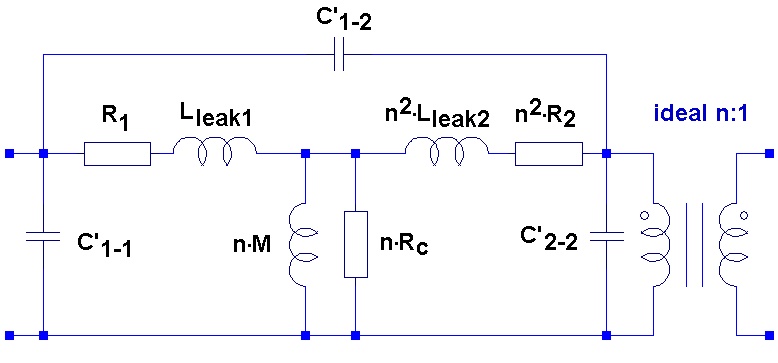Chapter: Electronic Devices and Circuits : Feed Back Amplifiers and Oscillators
Important Short Questions and Answers: Feed Back Amplifiers and Oscillators
FEEDBACK AMPLIFIERS AND OSCILLATORS
1. What
is the necessary condition for a Wien bridge oscillator circuit to have
sustained oscillations?
Then for oscillations to occur in a Wien Bridge Oscillator circuit the
following conditions must apply.
·
With no
input signal the Wien Bridge Oscillator produces output oscillations.
·
The Wien
Bridge Oscillator can produce a large range of frequencies.
·
The
Voltage gain of the amplifier must be at least 3.
·
The
network can be used with a Non-inverting amplifier.
·
The
input resistance of the amplifier must be high compared to R so that the RC
network isnot overloaded and alter the required conditions.
·
The
output resistance of the amplifier must be low so that the effect of external
loading is minimised.
2.
Define piezoelectric effect.
The piezo electric Crystals exhibit a property
that if a mechanical stress is applied across one face the electric potential
is developed across opposite face and viceversa. This phenomenon is called
piezo electric effect.
3.
Differentiate oscillator from amplifier.
Oscillators
Amplifiers
1. They are self-generating circuits. They
generate waveforms like sine, square and triangular waveforms of their own.
Without having input signal.
2. They are not self-generating circuits. They
need a signal at the input and they just increase the level of the input
waveform.
3. It have infinite gain
2. It have finite gain
4. Oscillator uses positive feedback.
5. Amplifier uses negative feedback.
4. State
Barkhausen criterion for sustained oscillation. What will happen to the
oscillation if the magnitude of the loop gain is greater than unity?
The conditions for oscillator to produce
oscillation are given by Barkhausan criterion. They are : i) The total phase
shift produced by the circuit should be 360o or 0o
ii) The Magnitude of loop gain must be greater
than or equal to 1 (ie)|Aβ|≥1
In practice loop gain is kept slightily greater
than unity to ensure that oscillator work even if there is a slight change in
the circuit parameters.
5. State
any two methods of achieving sweep linearity of a time-base waveform.
·
Exponential
charging
·
Constant
current charging
·
Miller
circuit
·
Bootstrap
circuit.
6. Draw the
equivalent circuit of a pulse transformer. Name the various elements in it.

R1=Primary winding and source resistance
R2=Total resistance reflected to primary side
=Leakage inductance
L=Magnetizing inductance
C=Total effective shunt capacitance
7. What is
the function of time base circuit?
A linear time base generator produces an output
waveform, which produces a portion which exhibits a linear variation of voltage
or current with respect to time.
8.
Define feedback. What are the types of it?
The process of combining a fraction or part of
output energy back to the input is known as feedback. The different types of
feedback are:
a.
Positive
feedback, b. Negative feedback
9. What is
meant by a) positive feedback b) negative feedback? Positive feedback
If feedback signal applied is in phase with the
input signal and thus increases the input, it is called as positive feedback.
It is also known as regenerative feedback.
Negative
feedback
If the feedback signal applied to the input is
out of phase with the input signal and thus signal decrease, it is called
negative feedback. It is also known as degenerative feedback.
10.
What are the advantages of negative feedback?
·
It
improves the stability of the circuit.
·
It
improves the frequency response of the amplifier.
·
It
improves the percentage of harmonic distortion.
·
It
improves the signal to noise ratio (SNR).
·
It
reduces the gain of the circuit.
11.
Define the feedback factor β?
It is the ratio between the feedback voltages
to the output voltage of the amplifier.
β = Vf/ Vo
Where, β is a feedback factor (or) feedback
ratio, Vf is the feedback voltage, Vo is the output
voltage.
12. What
is transresistance amplifier?
In voltage shunt feedback amplifier the sampled
signal is a voltage and the feedback signal (Which is fed in shunt) is a
current.
Rm = Vo / Ii
(or) Vo = Rm. Ii Where, Rm =
Amplifier gain.
Vo = Output voltage. Ii =
Input current.
13.How
does an oscillator differ from an amplifier?

14.What
is Barkhausan criterion?
·
The
conditions for oscillator to produce oscillation are given by Barkhausan criterion. They are:
·
The
total phase shift produced by the circuit should be 360o or 0o
·
The
Magnitude of loop gain must be greater than or equal to 1
15.
List the disadvantages of crystal Oscillator.
· It is suitable for only low power circuits
·
Large
amplitude of vibrations may crack the crystal.
·
It large
in frequency is only possible replacing the crystal with another one by
different frequency.
16.
Write the expression for frequency of
Oscillation of a colpitts oscillator.

Related Topics